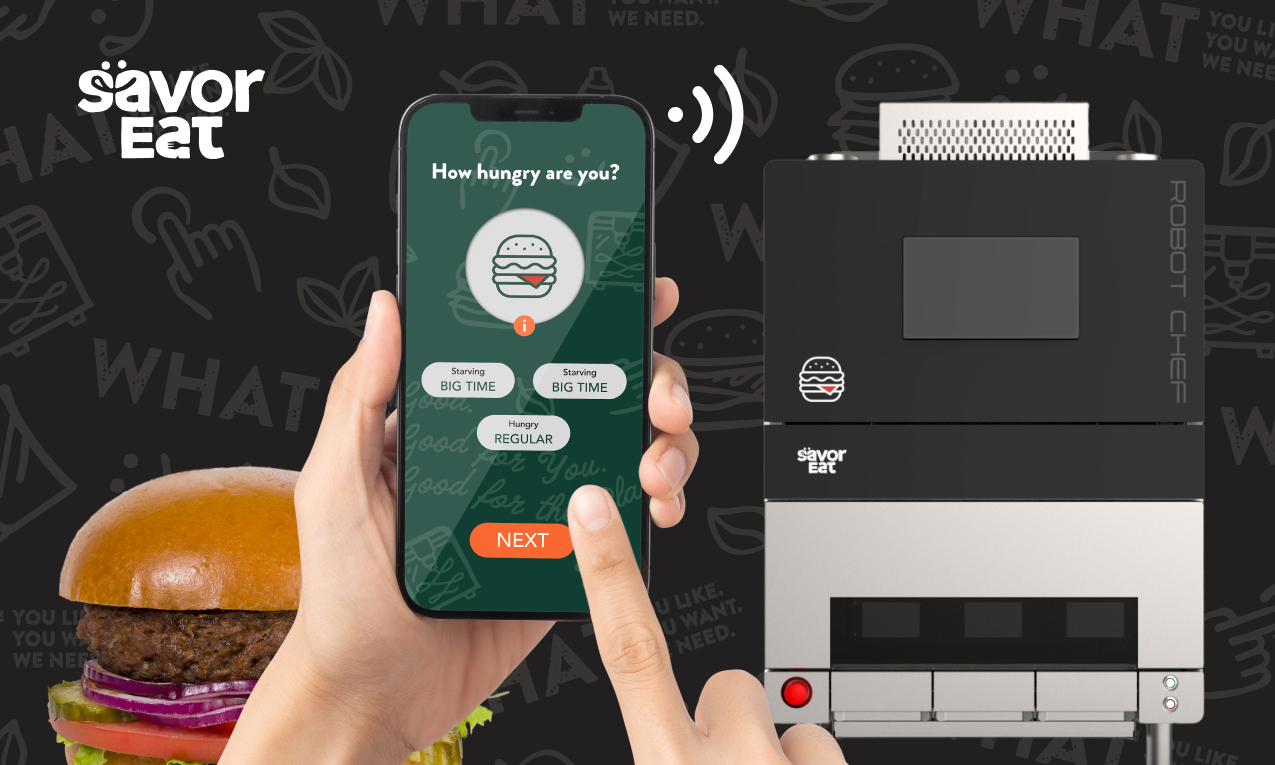Whether it is automation, robotic technology, or robust software solutions, the food industry has benefited tremendously from many of the latest technological developments.
One of the more recent technologies transforming the food industry is the introduction of the internet of things (IoT). Market research predicts the increasing adoption of the internet of things in the food industry to reach $10.74 billion by 2028.
With a growth rate of 9.50%, the IoT food industry is set to expand by leaps and bounds. If you want your business to get in on the action, this comprehensive guide on IoT applications in the food industry has all you need to know.
What Is the Internet of Things (IoT)?
Internet of things (IoT) refers to a network of smart objects that share data and connect to other devices through the internet. It facilitates data tracking and transfer between remote devices and can be used to analyze data patterns to improve industrial operations.
The wide application of the internet of things in the food industry is largely due to complementing technologies, such as cloud computing platforms, machine learning, analytics, conversational artificial intelligence (AI), and many more.
From agriculture to manufacturing and healthcare to the military, there is a wide range of applications for IoT devices. And it is growing rapidly within the food industry.

Internet of Things and the Food Industry
The food industry encompasses everything from production and agriculture to distribution, processing, and marketing. All the sectors involved directly or indirectly with food production and the processes they carry out are under the food industry umbrella.
Depending on their specific operations, these are further divided into primary, secondary, and tertiary industries.
The internet of things in the food industry is growing not just in one area but in each level of operation. It is making deliveries faster, increasing operational efficiency, streamlining logistics, reducing food and resource waste, and much more.
Let’s examine some of the major aspects of the food supply chain that are transforming because of the internet of things in the food industry.
Transformation of the Food Supply Chain With IoT
One of the most significant impacts of the advancements in the food industry IoT is on the supply chain.
-
Logistics
Food logistics includes all processes related to the movement of different products within the supply chain: planning, implementing, controlling, and more. Logistics covers all broad-level operations that control all crucial micro-operations.
Logistics costs, supply schedules, and losses due to delayed deliveries are all a drain on manufacturers and ripple all over the food industry.
The internet of things in the food industry connects devices via the internet to track progress, potential risks, and streamline overall processes. This provides manufacturers and operators more visibility on their operations and an opportunity to improve them – to reduce costs and losses in the future.
The more data available to suppliers, the better they can optimize their logistics processes.
-
Production and Processing
The internet of things in food industry technology provides many practical solutions to ease some of the biggest concerns plaguing production and processing. Monitoring and regulating the most complex elements can maximize resources and minimize losses.
Some uses of IoT in food production and processing include:
- Tracking equipment efficiency
- Predicting equipment maintenance
- Monitoring usage and waste
- Monitoring ingredient temperature
- Measuring protein and moisture content
- Controlling flow rates and distribution of ingredients
- Predicting potential mechanical wear and damage
Implementing the internet of things in food industry technology saves time and money, prevents downtime due to breakdowns, reduces waste, and improves overall operational efficiency.
-
Warehouse and Inventory Management
Pests, sun damage, poor handling, subpar equipment, product shortages — there are many challenges in the way of successful and highly efficient warehouse and inventory management.
The internet of things in food industry technology clears most of these obstacles to optimize processes within warehouses. IoT generates data using sensors that track the status of products and monitor sun or moisture exposure. When integrated with automation and ultrasonic systems, IoT can be leveraged for proper and safe storage of inventory items to limit pest infestations and minimize waste from poor handling.
Internet of things in the food industry technology can also be helpful in the early detection of crop damage, aging, bruising, rotting, etc., thus preventing losses incurred from sending such produce further down the supply line.
Other ways in which IoT helps in warehouse and inventory management include:
- Optimizing storage space and stock loading times
- Tracking stocks and expiration dates
- Tracking customer behavior trends
-
Product Packaging
The product packaging process introduces a lot of complexity for the manufacturer. From sourcing packaging from third-party vendors to building it into the production process, there are multiple actions to carry out. And all of these processes increase the risk of product damage.
IoT reduces some of the potential for damage using sensor-based technology that identifies the degradation of packaging during different phases of production. Once the data is available, IoT can also match it with customers’ usage patterns to engineer solutions that fit the durability requirements for the packaging.
-
Delivery
Order fulfillment is a crucial factor in the food supply chain. Its successful implementation is critical for any business to make profits, minimize food waste, and maintain high-quality customer service.
An IoT-supplemented food supply chain has improved delivery timelines by connecting all relevant networks. This way, companies can monitor products using GPS systems. This impacts the ability of manufacturers and logistics partners to meet tight delivery deadlines and fulfill orders.
-
Transparency
The increased demand for transparency in the food industry has prompted businesses to improve the traceability of their products and give consumers access to relevant data.
Thanks to the implementation of IoT and blockchain technology, it is easier for companies to trace the origin of their products today than it was years ago. From smart sensors to radio-frequency identification (RFID) tags, anyone can track the produce and monitor its freshness and delivery conditions.
Ultimately born out of increasing customer demands, traceability is one of the few drivers of improvements in logistics and delivery systems. Increased transparency allows businesses to identify inefficient processes that are increasing their expenses, not adding any value, or simply consuming too much time.
-
Food Safety
Ensuring food safety presents many challenges across all sectors and niches in the food industry. Food safety solutions have become extremely important with the rise in food product recalls and contamination issues.
IoT food in the industry helps improve the standards of food safety in many ways:
- Real-time monitoring of CO2 levels, temperature, shipping times, storage conditions, etc.
- Pathogen identifying sensors
- Chemical and biochemical compounds measuring imaging technology
- Detection of Hazard Analysis Critical Control Points (HACCP) violations
Internet of things in the food industry solutions can identify and prevent damage to raw materials and processed goods, thus enabling manufacturers, distributors, and even restaurateurs to maintain compliance with food safety standards throughout the supply chain.
When food safety concerns are mitigated or avoided entirely, the risk to consumers’ health is minimized.
-
Employee Safety
It can be challenging to gain complete control over employee safety because of the human element. The Internet of things in the food industry products helps make it a lot easier with the help of:
- Temperature monitoring
- Detecting employee sickness
- Ultraviolet lamps and wands to treat contaminated surfaces
Ensuring employee safety reduces the risk of illness within the workplace and the contamination of food products. It also optimizes the operational efficiency of all employees, which is crucial for a smooth production process.
-
Food Authenticity
Counterfeit food fraud affects over 30% of businesses in the food sector. It damages brand reputation and leads to significant losses in revenue. Moreover, it is difficult for brands targeted to regain lost consumer trust.
Digital identification tags on food packaging allow businesses to identify counterfeit products faster and get rid of them as quickly as possible.
Further, businesses can check the authenticity of a product anywhere on the production to distribution cycle.
Robust tracking and authentication technologies can be implemented using QR codes, digital tags, or even microchips.
-
Waste Reduction
Nearly 40 million tons of food products are discarded every year in the United States and 1.4 billion tons across the globe. Waste that benefits nobody and ends up rotting in landfills.
Food waste is one of the main target areas for the development of the internet of things in the food industry. It is also a United Nations sustainable development goal.
IoT in the food industry applications reduces waste in all stages of food production, processing, and distribution. This is done by monitoring and regulating storage and transport conditions, preventing damage from occurring and spreading, and using predictive analysis for damage and handling prevention.
During the distribution process, IoT reduces waste by helping retailers and restaurants predict demand accurately and order only what they need. It also limits the supply of unfit or damaged ingredients from the supply chain.

-
Faster Problem Solving
Remote equipment monitoring helps foresee potential hazards before they cause more damage or loss. This is a great benefit to the food industry, where loss can lead to lost profits and escalate into an issue of global demand and supply gap.
Applications of IoT in Other Areas of the Food Industry
Agriculture
Increasing farm yield has become another major concern for the global food industry. But the agriculture industry is also facing another problem: the depletion of natural resources.
Agricultural applications of the IoT in the food industry help mitigate both issues. The global market for IoT in agriculture is growing at a compound annual growth rate (CAGR) of 10.1%, which values the market at $35.55 billion by 2026.
Some of the key technologies helping transform agriculture through robust IoT solutions include:
Data Collection and Predictive Analysis
This is one of the most important applications of the internet of things in the food industry technology in agriculture.
Equipment performance, crop health, pest infestation—IoT solutions can track all of these processes and more and transfer the data in real-time to remote devices.
Some of the systems enabling this transformation are:
- Remote on-field sensors
- Control systems
- Motion detectors
- Linked mobile applications
- Wireless livestock tracking and geofencing
- And more.
After accumulating relevant data points, artificial intelligence (AI) uses them to predict and track the many factors that affect crop production rates. This gives farmers the information they need to make more well-informed decisions regarding harvests, storage, risk management, marketing techniques, etc.
On-Field Navigation
On-field navigation technology allows farmers to remotely control their field equipment, such as tractors, rotavators, etc. It limits the need for human labor and significantly reduces the risk of on-field injuries. And, of course, it improves the speed and efficiency of agricultural tasks.
On-field navigation uses the internet of things in the food industry network to connect machine learning-enabled devices, GPS systems, and smartphone apps.
Agricultural Drones and Automated Vehicles
Automated aerial and ground vehicles are being deployed in large numbers to improve the efficiency of agricultural work. These devices can perform specialized operations better than humans, increase yield, and close a substantial part of the demand and supply gap.
Some of the operations they manage include:
- Crop and soil health assessments
- Soil and field analysis
- Crop monitoring and spraying
- Irrigation
- Planting
- Automated crop harvesting
- And more.
Automation also introduces the use of robots that can undertake tasks that require precision in agricultural fields. Tasks like weeding, pesticide application, and more are better left to robots that can precisely and efficiently cover more expansive areas in much less time compared to humans.
Smart Greenhouses
Climate change has had drastic negative impacts on crop quality and yield.
Smart greenhouses and IoT technology have led to intelligently monitored spaces that require little to no human intervention. They can reduce crop damage due to drastic changes in climate and ensure that optimum conditions are provided for maximum crop yield.
Food Service
Food service includes businesses in the food sector that produce and offer out-of-home meals, such as restaurants, canteens, caterers, hotels, etc.
Two critical operations that the internet of things in the food industry technology is transforming in the food service business are:
Connected Ovens
Smart ovens are connected to the internet and controllable via remote devices. Users can easily monitor the conditions of the food and control the oven settings to ensure a top-quality product.
These systems use temperature sensors, wireless transmission modules, video cameras, and more technologies that work together to create a high-functioning smart oven. SavorEat’s Smart Robot Chef is controllable by the end consumer of food operator via IoT – enabling the individual to send direct and personalized food preparation preferences (i.e., protein/fat levels, doneness level) directly to the Robot Chef.
Smart Refrigerators and Remote Controlled Units
Refrigerators and storage units are essential equipment in the food service industry. Equipment failure can be disastrous to perishable ingredients and drain the restaurant’s resources.
With IoT technology, smart sensors, and remote control, monitoring and regulating the optimum temperature in these storage systems becomes much more manageable.
Retail
The retail sector accounted for 13% of all food waste in 2019. This continues to be a huge problem in this sector, along with increasing demand for sustainability, energy savings, and transparency for customers.
Food retailers have also adopted popular food industry IoT technologies such as sensors and automation. Here are some revolutionary implementations that are unique to the sector:
Reverse Vending Machines
Reverse vending machines are a fantastic solution to promote recycling habits among consumers. These machines accept recyclable disposables as deposits and provide a certain sum in exchange. They’re a practical and convenient way to incentivize people to recycle more, especially if local recycling regulations are strict.
Digital Triggers
The introduction of digital triggers into packaging benefits consumers and manufacturers alike.
Digital triggers are invisible barcodes you can scan with a smartphone or other devices that can connect with a packaging cloud. The codes provide access to real-time data at the click of a button. Consumers can access important information, such as ingredient sources, nutrient lists, recipe ideas, cooking instructions, and many more.
Energy Consumption
IoT can also help monitor and reduce energy consumption across all sectors of the food industry. With advanced sensor technology, manufacturers, retailers, distributors, and logistics partners can keep an eye on the energy consumption of particular devices or equipment to better regulate their overall power usage.
It is also beneficial in the food service and production sectors, where ovens or storage units might be left in operation for extended periods. In such cases, IoT food industry sensors can automatically shut off unused equipment and send alerts when power consumption is higher than usual. This reduces energy losses, equipment damage, downtime, and the risk of damage to perishable products.
How is IoT Connecting the Restaurant Kitchen?
The out-of-home (OOH) food sector is a rapidly expanding one, especially since the pandemic. The combination of AI, robotics, automation, management software, and IoT technology is making it easier than ever to streamline operations and meet increasing consumer demand.
Here are some of the technological advancements at the center of the kitchen transformation:
Sensors
Sensors are crucial throughout the kitchen, from the refrigerator to the ovens and cooking stations. They make devices smarter and easier to manage remotely. Their IoT compatibility makes it easier for restaurant managers and chefs to monitor every element of food prep and regulate processes.
Employing smart devices and equipment in the restaurant kitchen can significantly improve operational efficiency in multiple ways:
- Ensuring a safer cooking environment
- Optimizing storage conditions
- Controlling food prep and cooking methods
- Reducing food waste
- Reducing energy consumption
- Reducing waste
- Minimizing expenses
- Enhancing equipment performance
- And more.
Data Harvesting Gateways
Data harvesting gateways include technologies that help restaurants collect data to improve their operations:
- Online surveys and feedback forms
- POS systems
- Web and social media interactions
- Online ordering platforms
- Emails interactions
- Online reservation systems
- Online reviews
- Promotional activities
- Free Wi-Fi
- Loyalty programs
- Online campaigns
With rapidly changing industry trends and customer preferences, it can be difficult for food service businesses to keep up. Applications of the food industry IoT in restaurants help companies gather crucial data and observe patterns in consumer behavior to make timely adjustments to their offerings and provide services that are in demand.
Cloud-Based Storage and Analytics
All information gathered from connected IoT devices is stored in cloud-based systems. These systems are supported with analytical software that can help provide solutions to food waste and suggest ways to enhance the following:
- Operational efficiency
- Decision-making
- Inventory ordering and stock management
- Control over operations
- Marketing strategies
- Personalization
- Employee scheduling
- And more.
Mobile Apps
Mobile applications that connect seamlessly and remotely to IoT-compatible devices complete the final gap in a connected kitchen. These apps connect guests to online services and enable restaurant managers to monitor and control the kitchen no matter where they are.
IoT-connected kitchens provide restaurant owners and managers more control over a largely unpredictable part of the food industry.
As the scale and adoption of technologies like 3D food printing and ghost kitchens increase, the implementation of IoT will be a crucial element of restaurant development.
IoT: Summing Up

IoT has changed the way we interact with the world around us. And applications of IoT in the food industry take it a step further by changing the way we interact with the food we consume and the processes involved in its production.
Food industry IoT has had a tremendous impact on improving predictability, authenticity, transparency, and consistency. It has also reduced food safety and employee safety risks, food waste, fraud, labor shortage, and high energy consumption.
But despite its benefits, the food industry’s internet of things technology has yet to be widely adopted all over the world. This is primarily due to the fear of security threats, loss of privacy, lack of knowledge of the benefits of these systems, and limited budgets.
For now, enterprises that can adapt to the IoT in the food industry can make the most of the technology available to them. Soon enough, the entire industry and global population can benefit from these advancements.
Food operators can take a close look at their current operations to see what IoT applications might help streamline workflow and maximize efficiency. You can identify areas that aren’t contributing to your establishment’s revenue and find a solution in the IoT applications listed above.
The best solutions will incorporate IoT to optimize your operations and help you deliver exceptional service.





